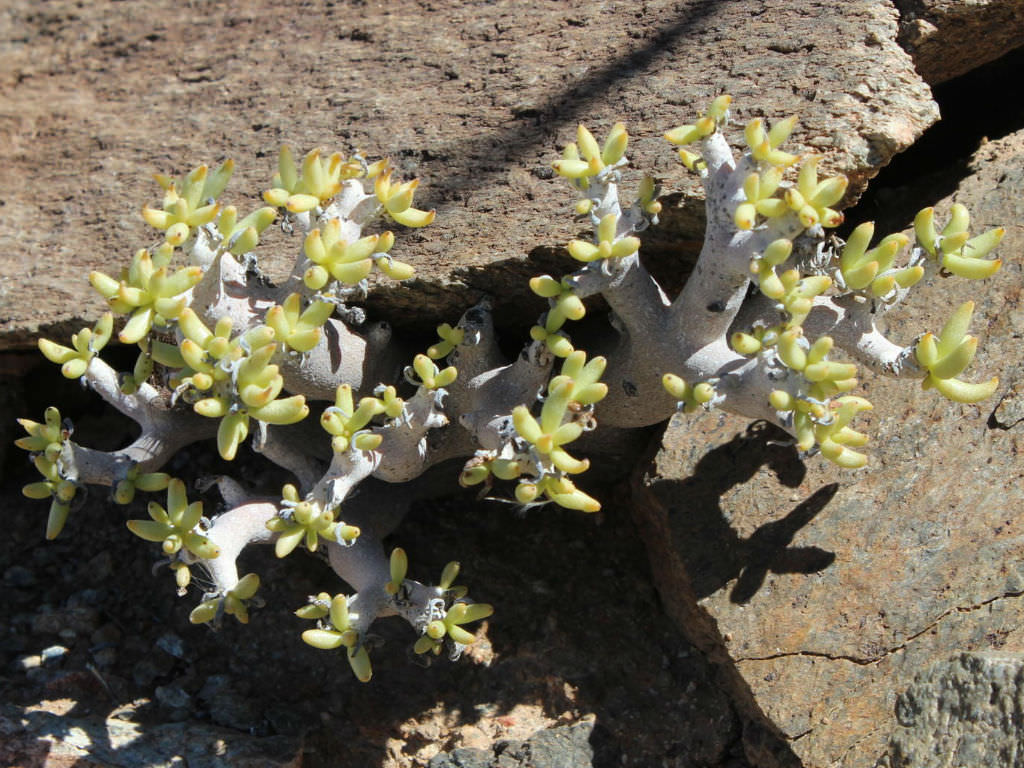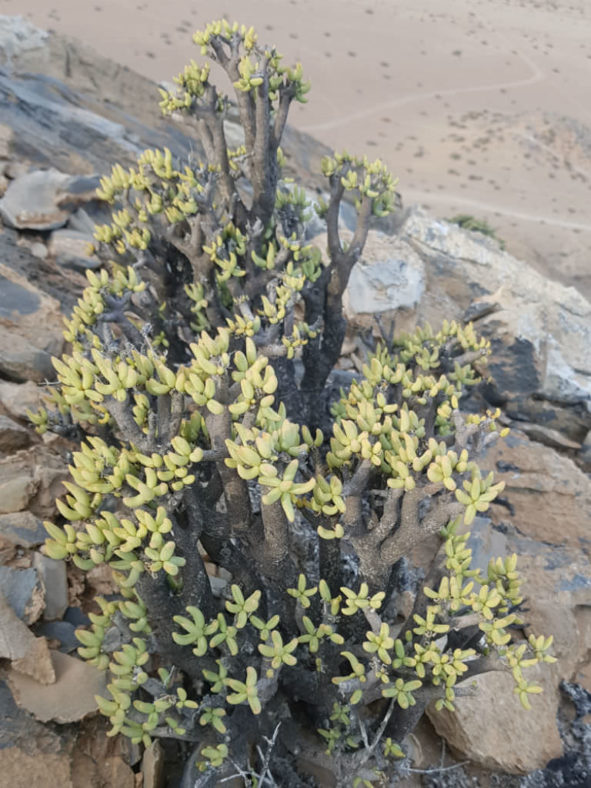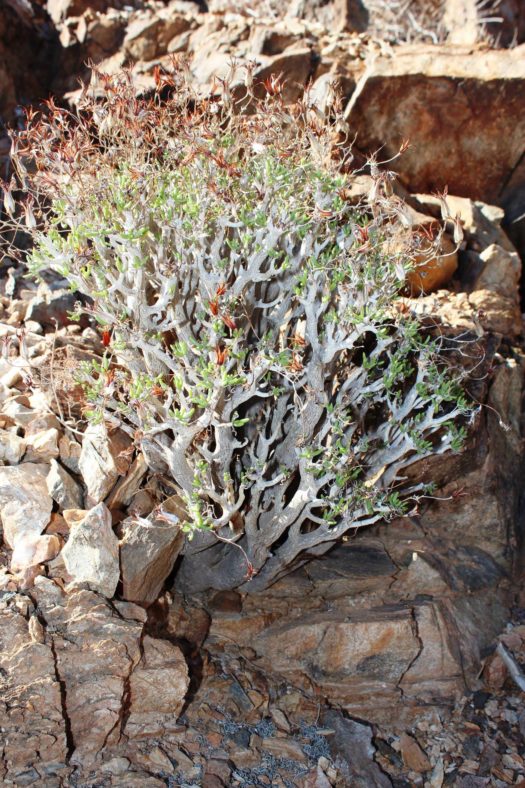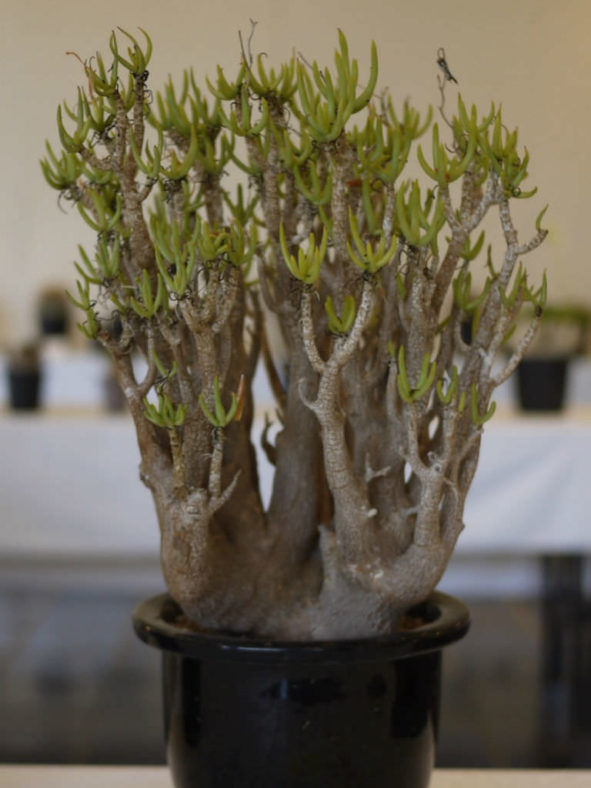Scientific Name
Tylecodon hallii (Toelken) Toelken
Synonym(s)
Cotyledon hallii
Scientific Classification
Family: Crassulaceae
Subfamily: Kalanchoideae
Genus: Tylecodon
Etymology
The specific epithet "hallii (HALL-ee-eye)" honors Harry Hall (1906-1986), a British-born horticulturist, botanist, and succulent plant collector.
Origin
Tylecodon hallii is native to South Africa (Northern Cape) and southern Namibia.
Description
Tylecodon hallii is a dwarf succulent shrub with a thick main stem and branches that form a rounded crown. It can grow up to 12 inches (30 cm) tall, while the main stem can reach up to 3.2 inches (8 cm) in diameter. When young, branches are grey with darker spots, becoming darker with usually dark grey flaking bark at maturity. The leaves are yellowish-green to brown, smooth or with few scattered glandular hairs, and crowded at branch tips. They are curved inwards, sometimes with a groove on the upper surface, and can measure up to 1.4 inches (3.5 cm) long and 0.2 inches (0.5 cm) in diameter.
The flowers are tubular and can reach up to 0.8 inches (2 cm) in length and 0.2 inches (0.5 cm) in diameter. They are yellowish-green, more or less tinged brown, glandular-hairy, and appear in spring.

How to Grow and Care for Tylecodon hallii
Light: This succulent can survive direct sunlight exposure without problems, but it will grow beautifully in partial shade.
Soil: A well-draining soil mix is a key to healthy T. hallii. Poor drainage and overwatering most commonly cause root rot in both indoor and outdoor plants. Indoors, it is essential to use pots with at least one drainage hole at the bottom.
Hardiness: Like all Tylecodons, this succulent is highly tolerant of high temperatures and cold, frost-free conditions during the winter. T. hallii can withstand temperatures as low as 25 to 50 °F (-3.9 to 10 °C), USDA hardiness zones 9b to 11b.
Watering: As a winter grower, T. hallii requires careful watering during winter and spring. Get the soil wet, and then wait until it is dry before watering again. In summer, reduce watering to once per month.
Fertilizing: Use liquid fertilizer for cacti and other succulents in winter.
Repotting: You do not need to repot this plant often. Instead, you can do it when you see that the container becomes too small or shallow.
Propagation: T. hallii can be cultivated either by seed or by cuttings. Sow the seeds in fall and winter. The best time for taking cuttings is the fall.
Learn more at How to Grow and Care for Tylecodon.
Toxicity of Tylecodon hallii
T. hallii is adapted to avoid animal predation being poisonous. Therefore, keep it away from children, pets, and livestock.
Links
- Back to genus Tylecodon
- Succupedia: Browse succulents by Scientific Name, Common Name, Genus, Family, USDA Hardiness Zone, Origin, or cacti by Genus
Photo Gallery
Click on a photo to see a larger version.


